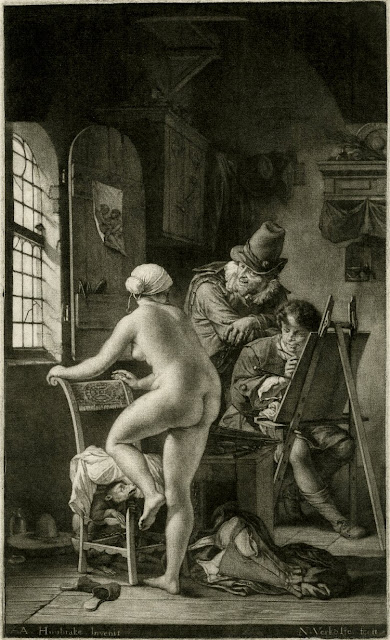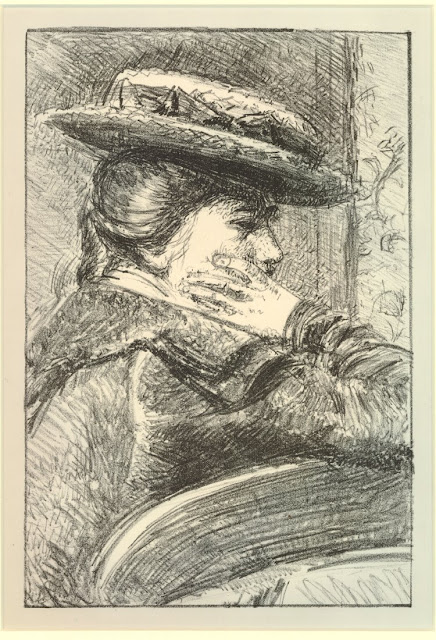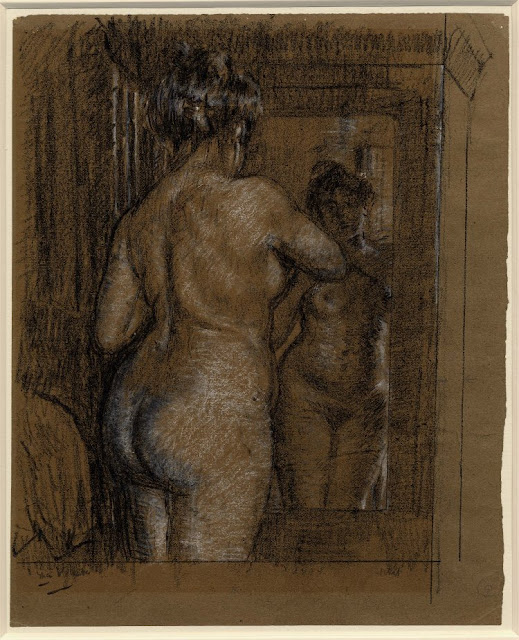 |
| attributed to François Duquesnoy Young artist modeling statuette of Dancing Faun ca. 1620-43 drawing British Museum |
 |
| Willem Buytewech Interior of artist's studio (Title-page design) ca. 1620-22 drawing British Museum |
 |
| Rembrandt Artist in studio drawing model on dais 1639 drawing British Museum |
from Under Ben Bulben
Quattrocento put in paint,
On backgrounds for a God or Saint,
Gardens where a soul's at ease;
Where everything that meets the eye
Flowers and grass and cloudless sky
Resemble forms that are, or seem
When sleepers wake and yet still dream,
And when it's vanished still declare,
With only bed and bedstead there,
That Heavens had opened.
Gyres run on;
When that greater dream had gone
Calvert and Wilson, Blake and Claude
Prepared a rest for the people of God,
Palmer's phrase, but after that
Confusion fell upon our thought.
– William Butler Yeats (1939)
 |
| attributed to Willem Drost Artist's worktable ca. 1650-55 drawing British Museum |
 |
| Cornelis Galle after Peter Paul Rubens Pictura (Allegory of Painting) before 1650 engraving British Museum |
 |
| David Teniers the Younger Monkey masquerade - Painter's studio 1664 drawing British Museum |
 |
| Cornelis Dusart The old painter ca. 1675-1704 drawing British Museum |
 |
| Henri Bonnart (publisher) Gallant Peintre ca. 1678-1700 etching, engraving British Museum |
 |
| Bernard Lens Putto painting at an easel ca. 1680-1700 mezzotint British Museum |
Baroque Epigram
Ant upon ant write the text in
The ground and the grass only of waiting
And of the gap of gold sing silently and
Illustrate ennui with their antennae
And they cross out noon as in the tit-tat-toe
Time plays with itself and it is soon
That the absence of sound and of no-sound speaks
And love in its veiled pure minute grows old
The sunlight wearily lies down on naked
Buttock and pap and that grass blades
Prepare elaborately to celebrate neglect
And whimsies of shade spell out the label flesh
Assumes for itself wrapped tightly in a niche
Having only the one voice unique among kinds
Unpeeling itself to show what an artist's intent
Soft hand requires a lifetime to find
And what is vocally named in a brief
Polysyllable: "induplicable"
So from estrangement comes at arm's length
(Nappy among naps) on a new bathsheet
Its song near weeds' weave unassailably yet
Assailably moist till the checks and stripes
Pressed still flatter shout out a triumph
As on their local tricolor's great fête
And with the aid of earth (abetted by eternity
And the muscular planets) buoy up a loller
Supine on less than breath of what moves
Concealing its own hot length in the atom
Its weight and rhythmic outline stretched in
Mysterious hesitance and cosmic bottleneck
To throw in my eyes suddenly like soothing acid
Its clothed phrase and unclothed symphony
Washing them instantly of their waiting with pink
Ablutions and drying them with cursive hairs' wit
Till flush a the center as of bottomless space
A blue-sky of shadow lifts out of pink
But a few inches off! absenting itself only
To return at once in an enormous wink
By shifting its accent and slowing unclosing
Pale wings of an armpit's bruised butterfly
– Parker Tyler (1956)
 |
| Nicolaas Verkolje after Arnold Houbraken Painter and naked model ca. 1690-1715 mezzotint British Museum |
 |
| Anonymous French artist Academy life-class with nude model on dais ca. 1700-1800 drawing British Museum |
 |
| Jean-Michel Moreau le jeune after Pierre-Antoine Baudouin Le Modèle honnête 1770 etching, engraving British Museum |
 |
| Benoît-Louis Prévost after Charles Nicolas Cochin fils The Study of Drawing (illustration for Diderot's Encylcopédie) 1773 etching British Museum |
 |
| William Dent The Historical Painter (Charles James Fox caricatured as Oliver Cromwell painting the execution of Charles I) 1784 etching British Museum |
 |
| William Henry Pyne A Sculptor's Studio ca. 1790 watercolor British Museum |











































